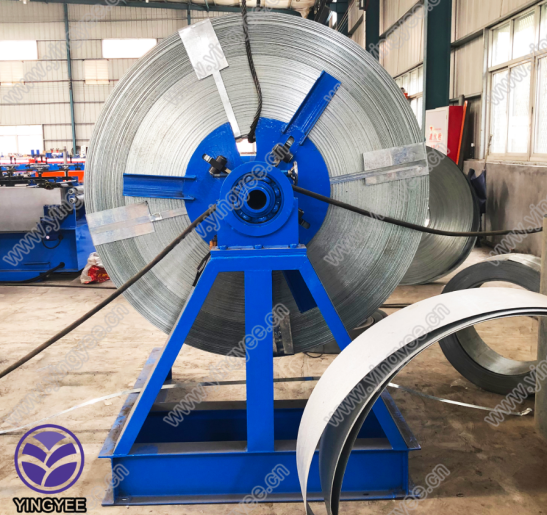
PLC Adjust Guide for Storage Upright Rack Roll Forming Machine with Hydraulic Cutting
The evolution of manufacturing technologies has brought significant advancements in the efficiency and precision of metal fabrication processes. One such innovation is the use of PLC (Programmable Logic Controller) in roll forming machines, particularly those designed for creating storage upright racks. This article delves into the intricacies of a storage upright rack roll forming machine equipped with hydraulic cutting, focusing on its PLC adjustment guide.
Overview of Roll Forming Technology
Roll forming is a continuous bending operation in which a long strip of metal, usually coiled steel, is passed through consecutive sets of rollers. These rollers progressively shape the metal into desired profiles without cutting, welding, or machining. The storage upright rack, vital for warehouse shelving, logistics, and inventory management systems, benefits significantly from this technology due to its strength-to-weight ratio and structural integrity.
Role of PLC in Roll Forming
The integration of PLC in roll forming machines marks a leap towards automation and precision. PLCs are specialized computers designed for real-time control of machinery, making them ideal for managing complex sequences in manufacturing processes. In roll forming applications, PLCs coordinate the movement of rollers, the feed rate of the metal strip, and the hydraulic cutting mechanisms, ensuring synchronous operation and high-quality output.
Key Features of a PLC-Driven Roll Forming Machine
1. Programmable Settings The PLC allows operators to input different program settings tailored for various rack designs. Adjusting parameters like roller speed, cutting intervals, and hydraulic pressure can significantly affect the final product's dimensions and quality.
2. Real-Time Monitoring With a PLC, machine operators can monitor various metrics in real-time, including temperature, speed, and material stress levels. This capability aids in ensuring machine safety and operational efficiency.
3. Automated Corrections If the PLC detects any anomalies, such as deviations in the material feed rate or pressure inconsistencies, it can automatically adjust the parameters or halt the operation to prevent material waste or machinery damage.
4. User-Friendly Interfaces Modern PLCs come equipped with intuitive interfaces that allow for easy navigation and adjustment of machine settings. This reduces the training time required for new operators and minimizes the chance of human error.
Hydraulic Cutting Mechanism
One of the standout features of this roll forming machine is its hydraulic cutting system. Unlike traditional cutting methods, hydraulic cutting is more efficient, requiring less mechanical effort while delivering cleaner cuts. The PLC plays a crucial role in this process by controlling the hydraulic pressure and timing of the cutting cycle.

1. Precision Cutting The PLC controls the hydraulic cutter's activation, ensuring that it operates at the right moment in the production cycle. This precision guarantees high-quality cuts, which are essential for the structural integrity of the racks.
2. Adjustable Cutting Force Depending on the thickness and type of material being processed, the PLC can adjust the hydraulic pump’s pressure, allowing for optimal cutting force. This flexibility is indispensable when switching between different material specifications for rack production.
3. Safety Mechanisms The PLC can incorporate safety features such as automatic shut-off if the machine operates outside of the preset parameters, protecting both the equipment and the operators.
PLC Adjustment Guide
To maximize the efficiency of a storage upright rack roll forming machine with hydraulic cutting, operators must follow a structured adjustment guide. Here are essential steps to consider
1. Initial Check Before any adjustments, ensure that the machine is properly calibrated and in good working order.
2. Input Adjustments Use the PLC interface to input necessary adjustments for roller speeds, cutting timings, and hydraulic pressures based on the specifications of the rack design.
3. Test Run Conduct a brief test run to evaluate the adjustments made. Monitor the machine for any irregularities in the forming and cutting processes.
4. Calibration Based on the results of the test run, make any additional calibrations necessary to ensure optimal efficiency and product quality.
5. Continuous Monitoring Throughout production runs, continuously monitor the PLC readings and be ready to make on-the-fly adjustments if needed.
Conclusion
The implementation of a PLC adjustment guide for a storage upright rack roll forming machine with hydraulic cutting not only enhances operational efficiency but also ensures product quality and safety. As the manufacturing landscape evolves, the importance of such technologies will only increase, providing companies with the tools needed to compete in an increasingly automated world. By harnessing the power of PLC systems, manufacturers can achieve unprecedented levels of precision and reliability in their production processes.